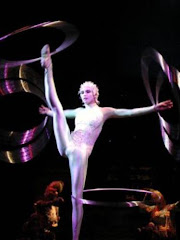The Basilica of Saint Peter (Latin: Basilica Sancti Petri), officially known in Italian as the Basilica di San Pietro in Vaticano and commonly known as St. Peter's Basilica, is located within the Vatican City. It occupies a "unique position" as one of the holiest sites and as "the greatest of all churches of Christendom".[1][2][3] In Catholic tradition, it is the burial site of its namesake Saint Peter, who was one of the twelve apostles of Jesus and, according to tradition, was the first Bishop of Antioch, and later first Bishop of Rome and therefore first in the line of the papal succession. While St. Peter's is the most famous of Rome's many churches, it is not the first in rank, an honour held by the Pope's cathedral church, the Basilica of St. John Lateran. (See: Status)
Catholic tradition holds that Saint Peter's tomb is below the altar of the basilica. For this reason, many Popes, starting with the first ones, have been buried there. There has been a church on this site since the 4th century. Construction on the present basilica, over the old Constantinian basilica, began on April 18, 1506 and was completed in 1626.[4]
St. Peter's is famous as a place of pilgrimage, for its liturgical functions and for its historical associations. It is associated with the papacy, with the Counter-reformation and with numerous artists, most significantly Michelangelo. As a work of architecture, it is regarded as the greatest building of its age.[5] Contrary to popular misconception, Saint Peter's is not a cathedral, as it is not the seat of a bishop. It is properly termed a basilica. Like all the earliest churches in Rome,[6] it has the entrance to the east and the apse at the west end of the building.
Michelangelo redesigned the dome, taking into account all that had gone before. His dome, like that of Florence, is constructed of two shells of brick, the outer one having 16 stone ribs, twice the number at Florence but far fewer than in Sangallo's design. As with the designs of Bramante and Sangallo, the dome is raised from the piers on a drum. The encircling peristyle of Bramante and the arcade of Sangallo are reduced to 16 pairs of Corinthian columns, each of 15 metres (50 ft) high which stand proud of the building, connected by an arch. Visually they appear to buttress each of the ribs, but structurally they are probably quite redundant. The reason for this is that the dome is ovoid in shape, rising steeply as does the dome of Florence Cathedral, and therefore exerting less outward thrust than does a hemispherical dome, such as that of the Pantheon, which, although it is not buttressed, is countered by the downward thrust of heavy masonry which extends above the circling wall.[5][19]
The ovoid profile of the dome has been the subject of much speculation and scholarship over the past century. Michelangelo died in 1564, leaving the drum of the dome complete, and Bramante's piers much bulkier than originally designed, each 18 metres (59 ft) across. On his death the work continued under his assistant Vignola with Giorgio Vasari appointed by Pope Pius V as a watchdog to make sure that Michelangelo's plans were carried out exactly. Despite Vignola's knowledge of Michelangelo's intentions, little happened in this period. In 1585 the energetic Pope Sixtus appointed Giacomo della Porta who was to be assisted by Domenico Fontana. The five year reign of Sixtus was to see the building advance at a great rate.[19]
Giacomo della Porta and Fontana brought the dome to a completion in 1590, the last year of the reign of Sixtus V. His successor, Gregory XIV, saw Fontana complete the lantern and had an inscription to the honour of Sixtus V placed around its inner opening. The next pope, Clement III, had the cross raised into place, an event which took all day, and was accompanied by the ringing of the bells of all the city's churches. In the arms of the cross are set two lead caskets, one containing a fragment of the True Cross and a relic of St. Andrew and the other containing medallions of the Holy Lamb.[19]
In the mid-18th century, cracks appeared in the dome, so four iron chains were installed between the two shells to bind it, like the rings that keep a barrel from bursting. As many as ten chains have been installed at various times, the earliest possibly planned by Michelangelo himself as a precaution, as Brunelleschi did at Florence Cathedral.
Around the inside of the dome is written, in letters 2 metres (6.5 ft) high:
fonte wikipédia
















Nenhum comentário:
Postar um comentário